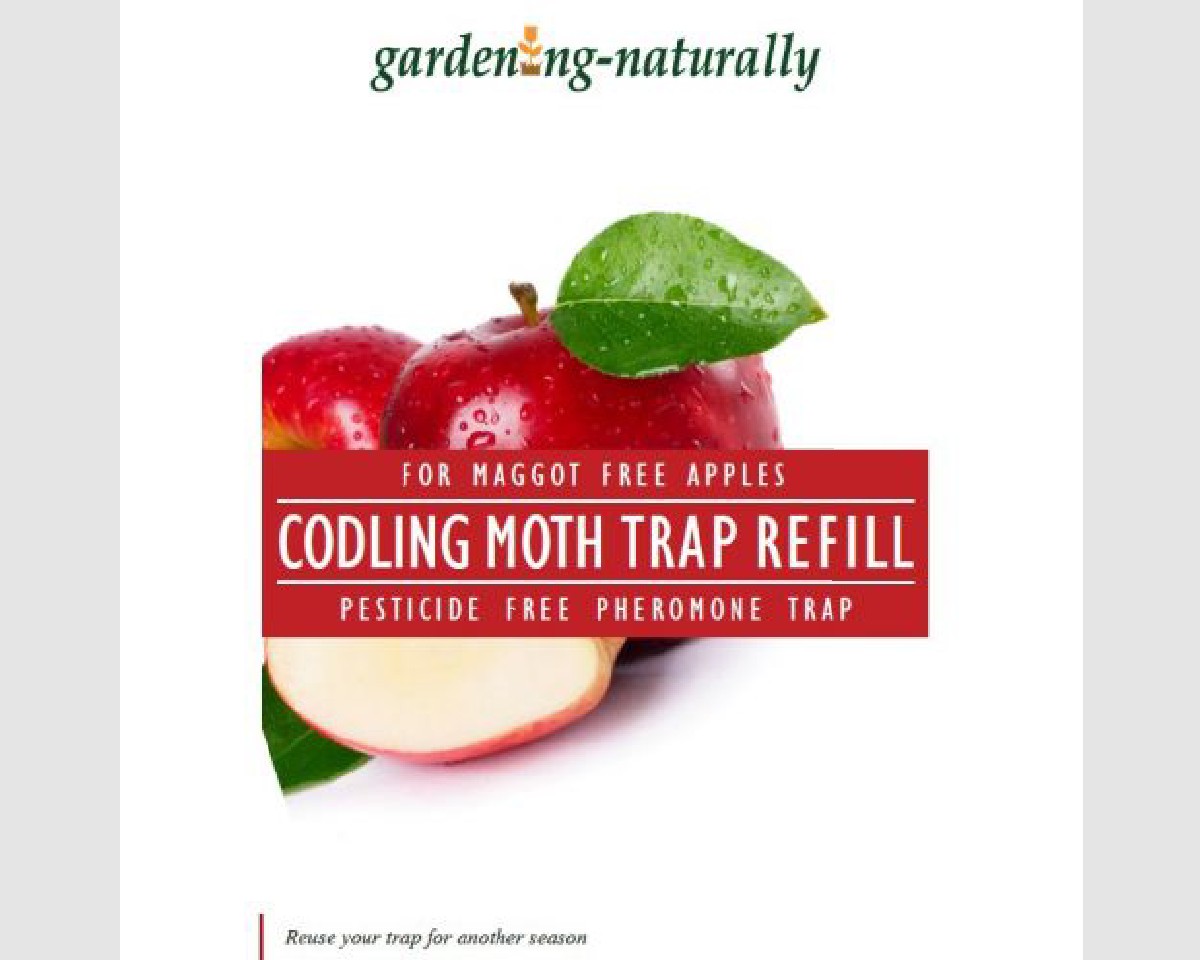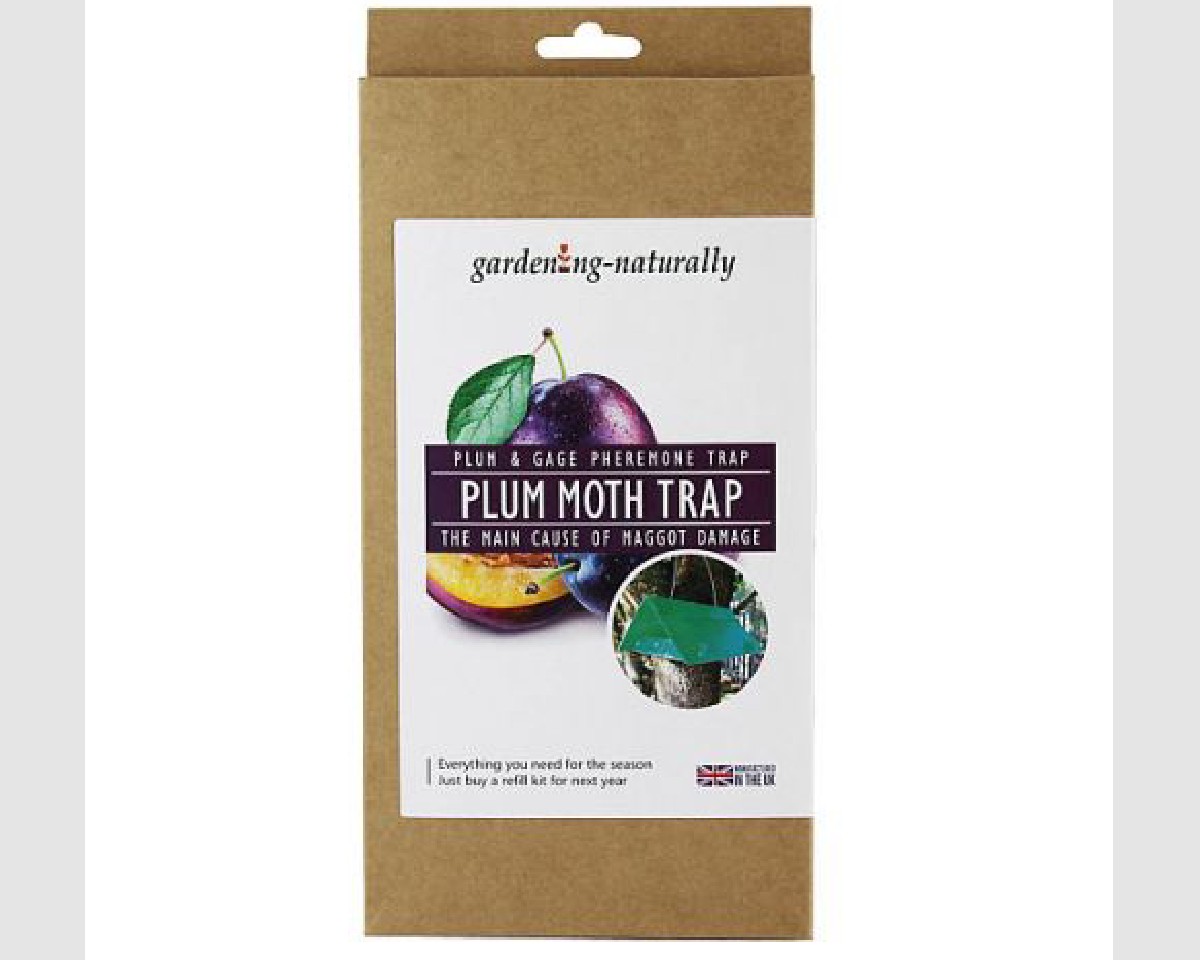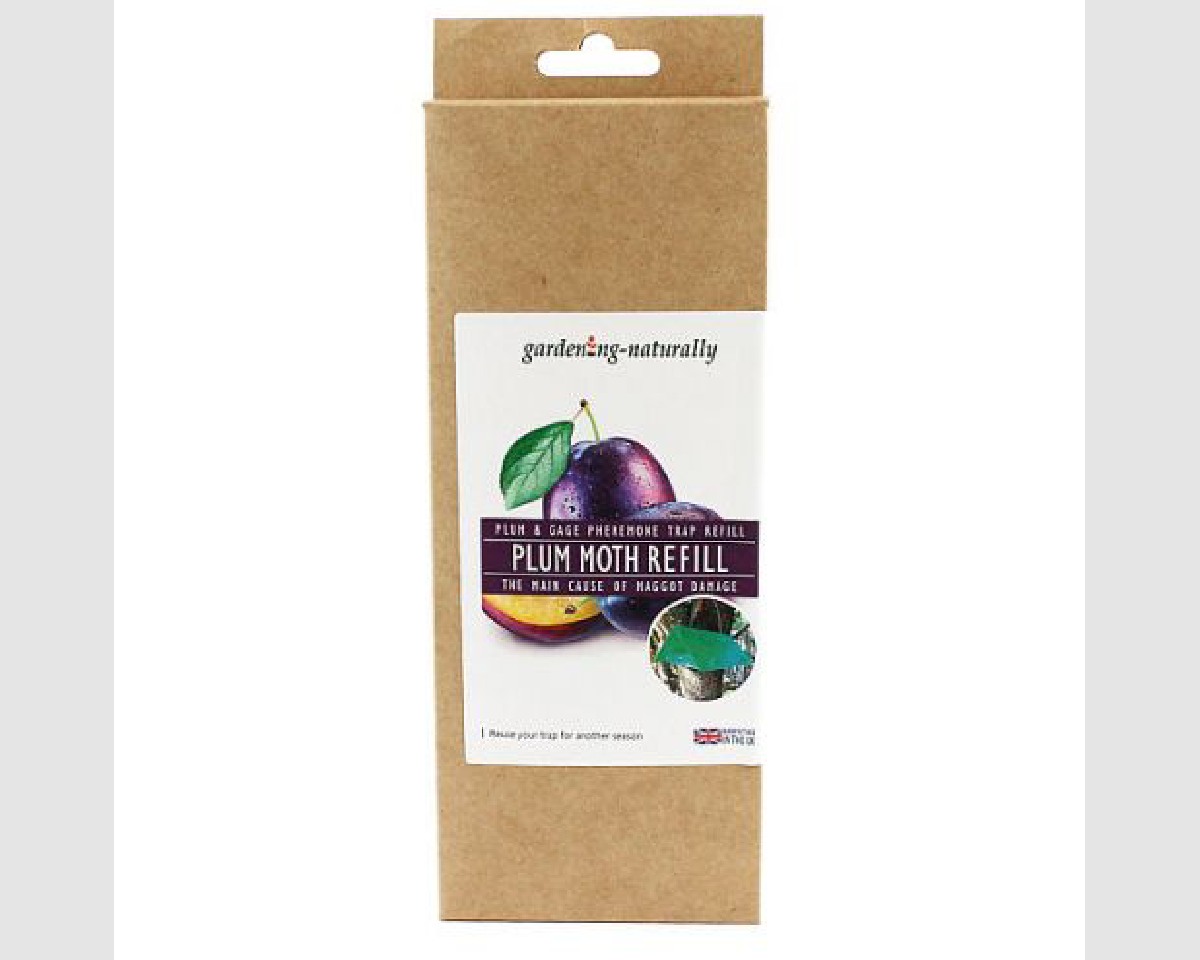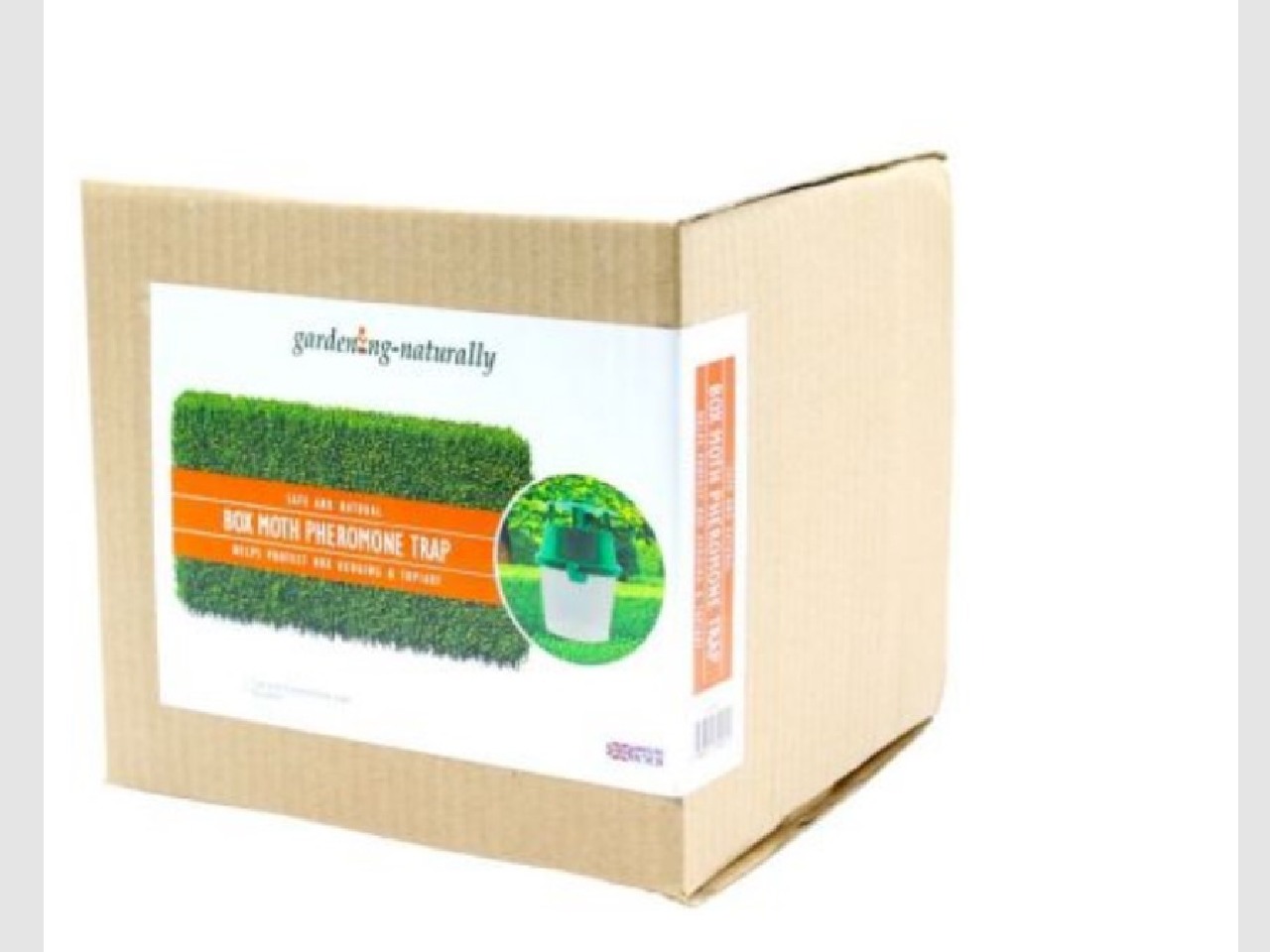Description
The codling moth is the scourge of apple and pear growers. Caterpillars - the moth's offspring - burrow into the fruit, making them inedible. The Codling Moth Trap mimics the scent of the female moth, luring the male into the triangular-shaped trap.
One trap should monitor up to 5 average size trees with a range of 15 metres (50 feet) of the trap. It should be hung at around head height on the windward side of the tree (or group of trees).
Includes:
1 trap with hanging wires
2 sticky inserts.
2 pheromone lures.
When to use:
In most seasons moths fly and mate on warm nights from Late May until the end of July, although in some years activity may continue untill well into August. In this case a 3rd lure and sticky insert may be needed. The trap should be placed in the garden soon after the middle of May. If spring weather is exceptionally warm, or in sheltered urban gardens, it may be an advantage to install the trap by early May. If in doubt, hang the trap after the petals begin to fall.
Instructions for use:
Assemble the trap. Place sticky insert sticky side up in the base of the trap. The pheromone lure (which looks like a hollow cone of soft rubber) should be removed from the foil sachet and laid in the centre of the sticky insert. Ensure that the end flaps are secured.
Note: The lure will release scent from when the sachet is opened - do not open sachet until the lure is needed.
In a garden one trap should monitor up to 5 average size trees with a range of 15 metres (50 feet) of the trap. It should be hung at around head height on the windward side of the tree (or group of trees).
After 5 Weeks - replace the sticky insert and lure. Inspect the trap regularly - the Codling Moth is small (about 8mm or 1/3rd inch long) dark coloured and rests with its wings folded to form a triangular shape.
If you are catching more than 15 moths per week the infestation is high and a suitable spray should be applied a week later. Continue monitoring and if again 15 or more moths are caught repeat the treatment.








